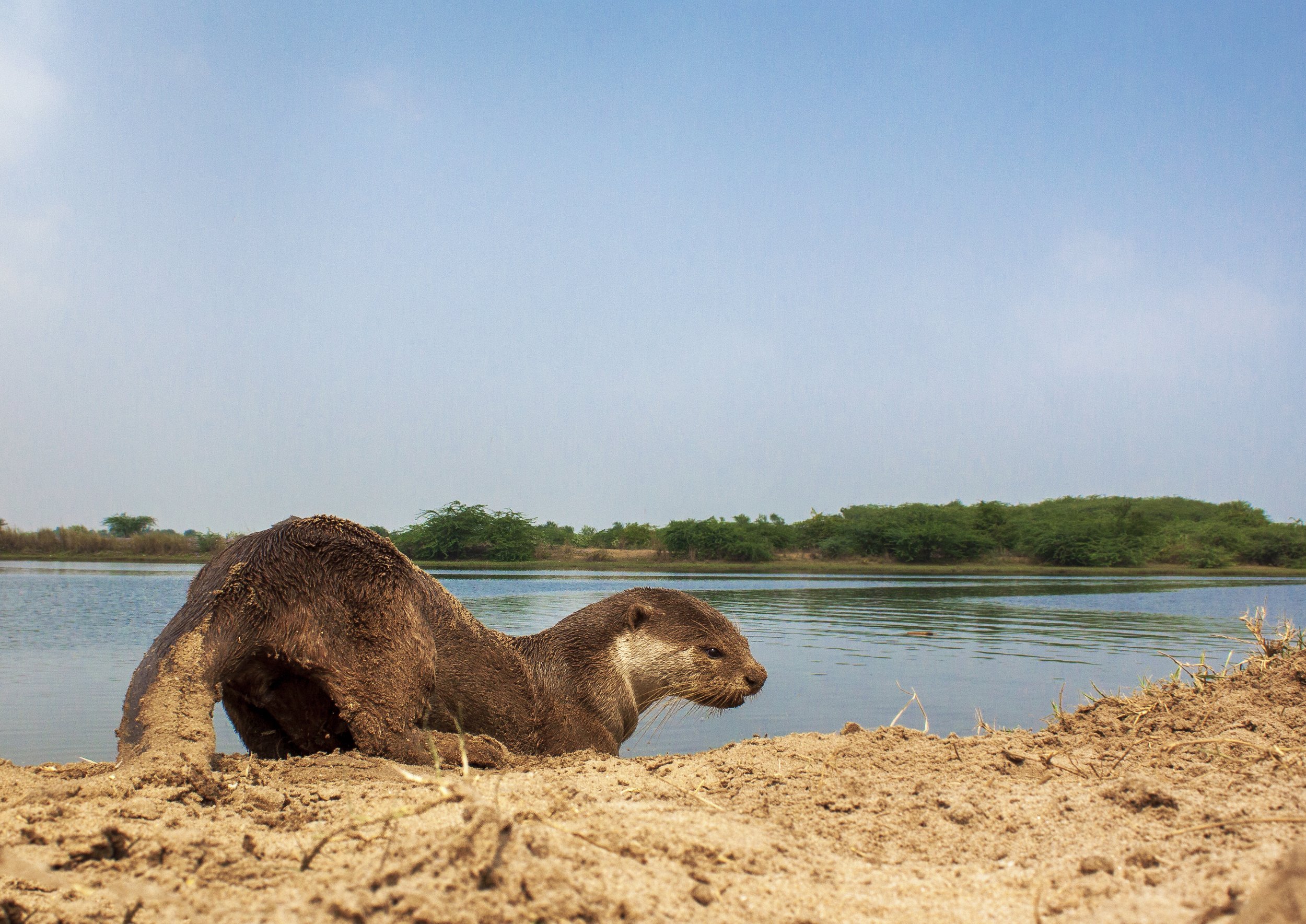Smooth-coated Otter (Lutrogale perspicillata)

©Anjani Kumar
QUICK GUIDE
SIZE - 1.21 m
WEIGHT - 7 to 10kg
DIET - Fish, shellfish and crustaceans
OFFSPRING - 2/5 cubs
CONSERVATION STATUS - Vulnerable
This otter species has a wide distribution in Asia with known groups recorded from Pakistan and India eastwards, across the Himalayan countries to China, and also down south-east Asia to Malaysia and Indonesia. You will find Smooth-coated otters generally in the vicinity of rivers, estuaries and swamps. However in recent times, there have been increasing reports of “urbanised” otters in places such as Singapore, with otters frequenting streets and using man-made water features for a quick dip.
© Omar Al-sheikhly
A sub-species of this wonderful animal can also be found in small numbers in the swamplands of Iraq and Iran. It is known as Maxwell’s otter (Lutrogale perspicillata Maxwelli), due to its connection to author Gavin Maxwell, who wrote the famous book “Ring of Bright Water”. This sub-species was believed to be extinct during the eighties, due largely to hunting and habitat destruction, yet during field surveys between 2007-2012 they reappeared, with a first photo of an adult recorded in March 2017 at Al-Edheam Marsh, Iraq.
©Sagar Giri
Reaching around 1.2m in length, and weighing between 7-10kg when fully grown, the Smooth-coated Otter will generally live in groups of between 10/20 animals, with a blend of adults, sub-adults and cubs. These groups can increase quickly with one lot of new cubs, with 2-5 young ones born at a time. In certain areas of Bangladesh, these otters are working alongside humans in fishing by chasing fish into nets that are lying in wait. The fishermen then haul in these nets, and all parties enjoy a nice fish dinner! Fish is not the only thing on the menu for the Smooth-coated Otter though, with shellfish and crustaceans also providing a tasty meal.
©Abel Yeo
Once again, the threats to this animal are almost entirely down to the human population. Habitat loss due to construction and development, pollution and hunting/trapping are all key reasons why this species is classed as Vulnerable in the IUCN Red list.




